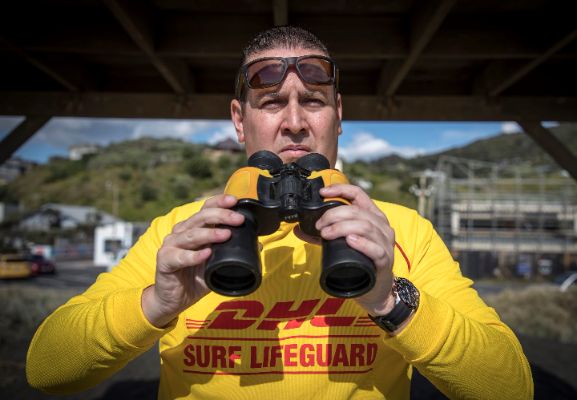Study Sheds Light On Fate Of Drowning Victims

Males make up 92% of New Zealanders who go missing off our coastline.
That’s one key finding of a world-first study by The University of Auckland reviewing Water Safety New Zealand (WSNZ) drowning statistics and other data from 2008 to 2017 relating to 219 fatalities.
The study, which was the first and largest study of consecutive drowning cases carried out in the world, also found that most missing people recovered weren’t wearing a lifejacket when found (96%). The study also found that only a small proportion (15%) of missing people weren’t located (9%) or the outcome not reported (6%).
Study spokesperson Dr Jonathon Webber of the University of Auckland says the principal purpose of the research was to clarify how long it took to locate the bodies of people who went missing in the ocean, and how far the bodies were displaced from the point of entry into the water. He says the study found that the bodies of most missing people (58%) were recovered within 24 hours of searches commencing and 64% were located within 1km of where they disappeared. “That second statistic was unexpected, as was the finding that most of the incidents – 47% - occurred on the east coast of the North Island. You might have expected the west coast, which has much more challenging surf conditions, to top the list - but that wasn’t the case.”
Dr Webber says the study was purely a descriptive analysis of the statistics rather than an attempt to explain how the displacement occurred. “Our wish was to arrive at an understanding of these details to help inform our search and rescue agencies and assist victim support workers, water safety advocates, forensic and accident investigators, ocean scientists and the Coroner in the course of their duties.”
The study, which was co-authored by Dr Webber, Dr Kevin Moran (University of Auckland), Dr Claire French (University of Otago), Felicity Fozard (WSNZ) and Olivia Pearless (University of Auckland), principally drew on data from WSNZ’s DrownBase™ database, along with the National Coronial Information System (NCIS), Ministry of Justice records and media reports.
The study found the median age of drowning victims was 41.9 years. In terms of ethnicity, 37% were European NZ, 12% were Asian, 24% were Maori and 19% Pasifika, the latter two over-represented in the statistics compared with their percentages in the population, says Dr Webber.
The most frequent activities the victims were involved in before going missing were boating (31%), swimming (20%), fishing (18%) and diving/snorkelling (16%).
A surf lifeguard himself, as are co-authors Dr Kevin Moran and Dr Claire French, Dr Webber says the study strongly reinforced the need to wear some form of flotation when recreating or working in, on or around the water – and to preferably not undertake the activities alone. “It also confirms what we already know to be high-risk groups: males, adults boating, young people swimming and Asian, Maori and Pasifika people fishing.”
Limitations in the study design meant it was difficult to tell whether the missing person was recovered offshore or on the coastline, and a number of other variables weren’t clear or well-documented, he says. “Future research in this area, coupled with better on-scene data collection, could better inform real-time predictive modelling of where and when a missing person is likely to be found.”
“That might result in more lives being saved and search and rescue teams may be able to zero in on where a missing person is, or, in the event of a drowning, the bodies of missing people being recovered and returned to their families sooner.”
SLSNR Chief Executive Matt Williams says the research compiled by its sector partners continues to be a valuable and welcome contribution to understanding the issues behind New Zealand’s coastal drowning statistics. “It reinforces our belief that the loss of life around our coastlines is a nationwide problem that needs attention. Drowning is a wide-ranging issue that impacts all ages and demographics, and it continues to have a significant toll on our communities.
“While the range of activities and forms of recreation that feature in the drowning toll grows and changes, this report supports the strategies Surf Life Saving are adopting and the processes we are putting in place to align our services where the needs are – and bring that tragic drowning toll down.”
Dr Webber says the study was likely to draw strong interest from water safety authorities overseas. “This is the first true human data study in this area and there’s a healthy respect for water safety knowledge arising out of New Zealand – we have some of the most testing water conditions in the world.”
The report on the study can be found free online, courtesy of New Zealand Search and Rescue Council funding, at https://doi.org/10.1016/j.forsciint.2020.110573


 Gordon Campbell: On The Hikoi Aftermath
Gordon Campbell: On The Hikoi Aftermath Free Speech Union: Fair Digital News Bargaining Bill Likely To Restrict Access To Information, Polling Shows Most Oppose
Free Speech Union: Fair Digital News Bargaining Bill Likely To Restrict Access To Information, Polling Shows Most Oppose Auckland Transport: Driver Safety Screens Now Rolling Out Across Auckland’s Bus Fleet
Auckland Transport: Driver Safety Screens Now Rolling Out Across Auckland’s Bus Fleet People Against Prisons Aotearoa: 'Expect Resistance' - Community Group Pushes Back Against More Cops With Guns
People Against Prisons Aotearoa: 'Expect Resistance' - Community Group Pushes Back Against More Cops With Guns Greenpeace: New Zealand Drops In Global Ranking On Climate Action
Greenpeace: New Zealand Drops In Global Ranking On Climate Action PSA: Spending Cuts Need To Stop - PSA Urges Govt To Listen To Economists
PSA: Spending Cuts Need To Stop - PSA Urges Govt To Listen To Economists Stats NZ: National Population Estimates: At 30 September 2024 (2018-base)
Stats NZ: National Population Estimates: At 30 September 2024 (2018-base)


